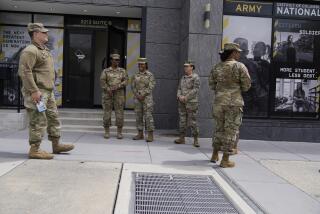Army Turns Cold Shoulder to Huge Cuts
WASHINGTON — Four years ago, facing a new landscape of unfamiliar enemies and futuristic weapons, Army leaders set out to redesign the combat division, the basic building block of American land warfare from World War I through the Persian Gulf War.
The results, due to be announced today, fall considerably short of the wholesale streamlining of combat structure advocated by some influential strategic thinkers inside and outside the Army.
Rejecting calls for bolder change following the end of the Cold War, the Army has decided to trim troop strength in its 18,000-soldier divisions by a modest 13% and keep the structure essentially intact, the most conservative of several options that senior Army officials said were considering.
The changes, affecting six of the Army’s 10 divisions, are the first of what military officials say will be a progressive series of moves over the next decade or two to create more agile land forces better suited to face 21st century adversaries. How much and how fast the U.S. military can transform itself from a cumbersome giant primed to confront a Soviet invasion of Europe, into a leaner, more rapidly deployable and more survivable force has constituted the Pentagon’s central challenge since the Soviet Union’s collapse at the start of the 1990s.
The Army, like the other U.S. military branches, has lost more than a third of its uniformed personnel over the last decade, but it has continued to rely on divisions to bring together the components for waging war--tank battalions, infantry regiments, aviation brigades, support battalions and so on. Each division is commanded by a two-star general and usually fights as part of a corps, which contains two to five divisions.
The new divisions will have somewhat fewer armored vehicles and more reconnaissance and artillery assets than before. Still, like their predecessors, they will consist of three armored or mechanized brigades and include a mix of artillery, helicopters, air defense, communications, intelligence and support elements.
More to Read
Sign up for Essential California
The most important California stories and recommendations in your inbox every morning.
You may occasionally receive promotional content from the Los Angeles Times.










